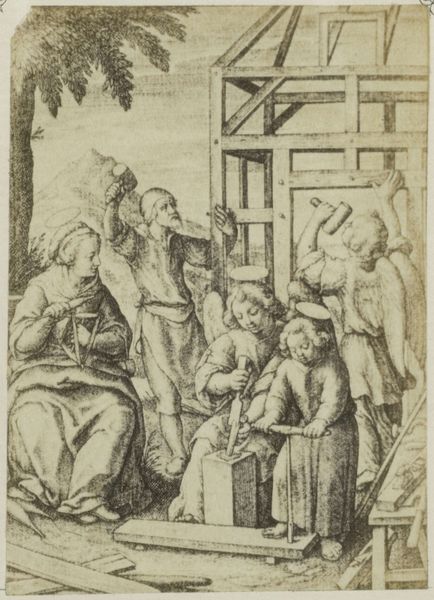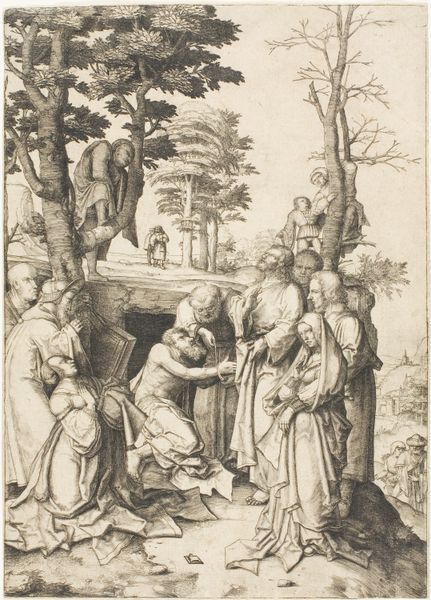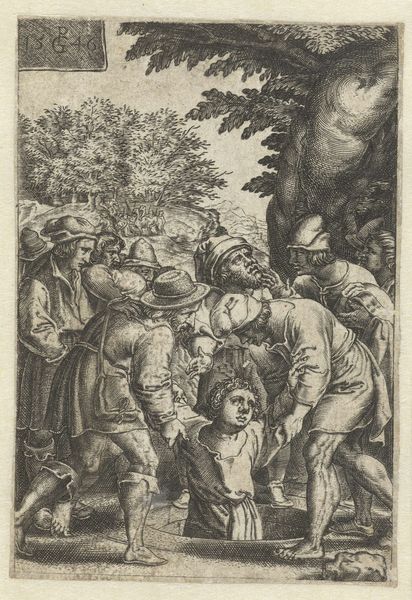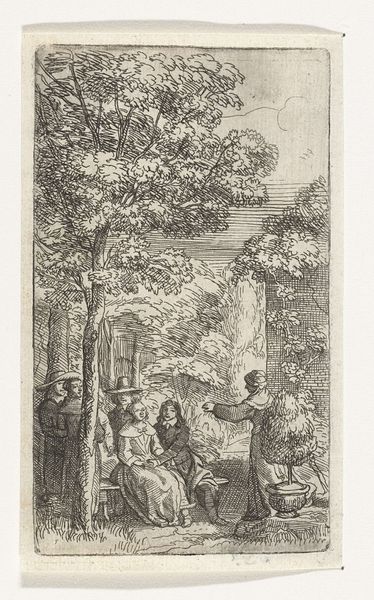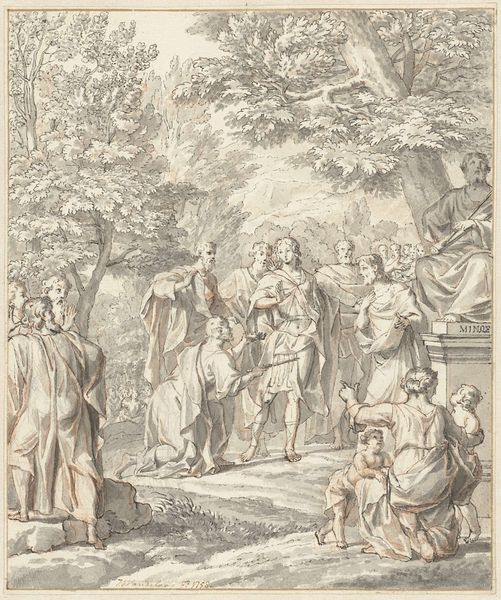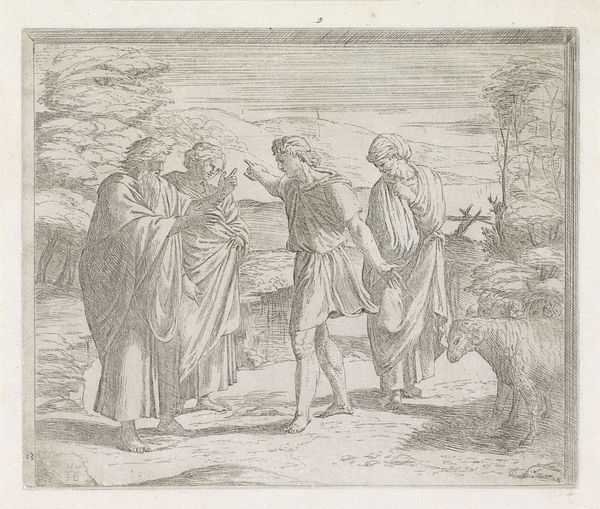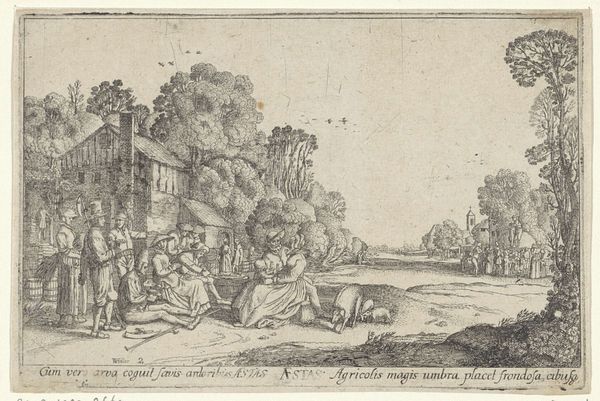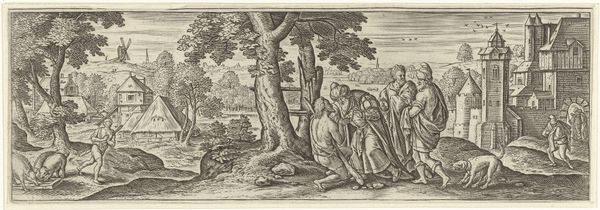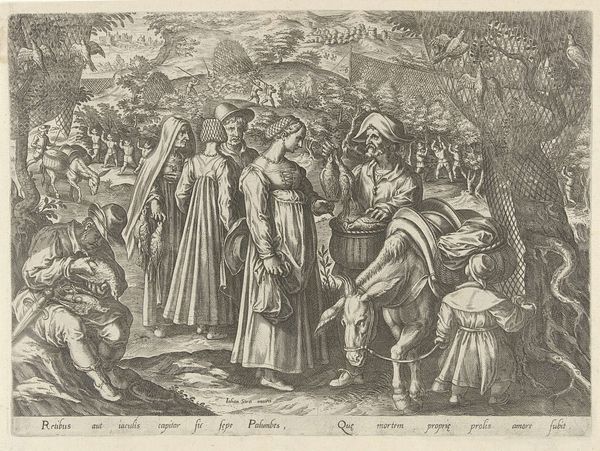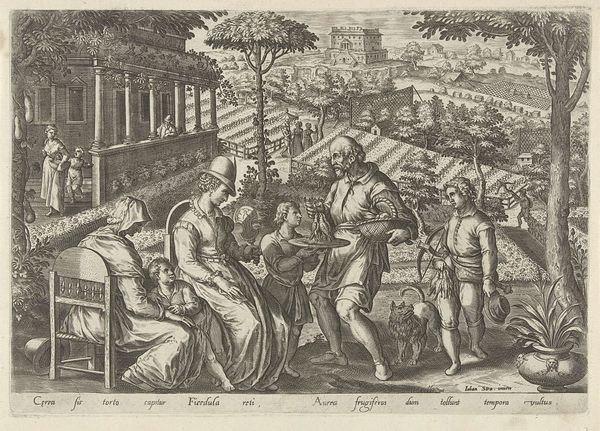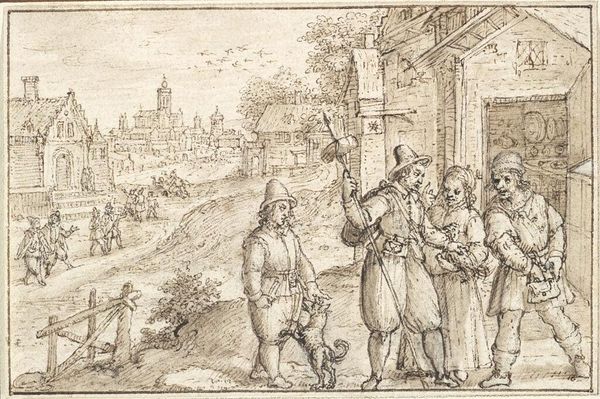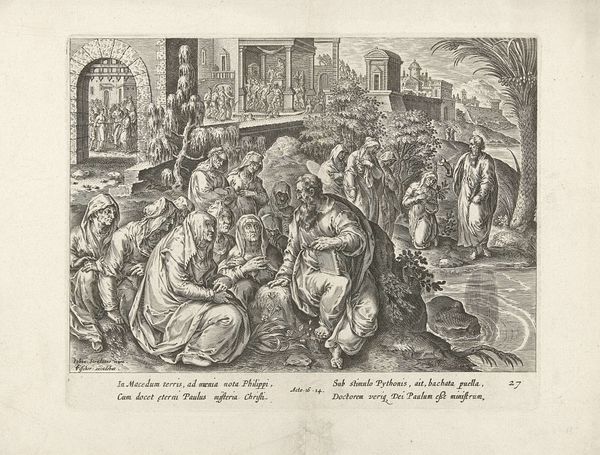
drawing, ink, graphite, pen
#
portrait
#
drawing
#
narrative-art
#
dutch-golden-age
#
landscape
#
ink
#
graphite
#
pen
#
genre-painting
#
history-painting
Dimensions: height 161 mm, width 173 mm
Copyright: Rijks Museum: Open Domain
Curator: Jan Miense Molenaer's "The Proposal," likely created sometime between 1620 and 1668, offers us a glimpse into a Dutch Golden Age village scene. It's currently held in the Rijksmuseum. Editor: It strikes me as deceptively simple, at first glance. But then, the scene's almost unsettlingly staged – everyone so deliberately placed and so closely watching the couple. Curator: Indeed. Consider the symbolism inherent in their placement. The woman, isolated on a small mound, facing a sea of onlookers, embodies a critical juncture. Marriage was more than a personal choice then; it was a socio-economic pact. The landscape's inclusion reminds us of community and lineage at stake in marriage. Editor: Right. And if we look at it from a purely material perspective, this drawing is graphite, pen, and ink on paper, modest in materials yet potent in conveying this drama. Note the layered application of the pen and the hatching. Molenaer clearly knew his craft! The labor speaks to a burgeoning market for such genre scenes. Curator: Precisely. The composition guides our eye, the architecture grounding one side of the tableau, and the cluster of observing villagers framing the scene as one unfolds within a controlled social atmosphere, a world brimming with coded meaning. Their body language signifies the weight of social expectations in a choice made more through ritual than sentiment. Editor: The question then becomes, how accessible were these drawings? Was Molenaer catering to a burgeoning middle class eager to consume images reflecting their daily lives and social values? Curator: Doubtlessly. Through genre scenes, visual archetypes solidified cultural identity. But to truly engage with "The Proposal," it must also be considered in a historical, religious, or ethical context; it evokes broader societal narratives about women and power, about duty and tradition. It invites consideration beyond this frozen instant, demanding consideration of legacy. Editor: And also consideration of the marketplace, the very economic conditions which gave rise to both artist and image! It makes you wonder how those material conditions impacted even a ritual as seemingly "pure" as a marriage proposal. A fascinating dialogue! Curator: I concur. A modest work evoking powerful meanings and discussions of the life of art.
Comments
No comments
Be the first to comment and join the conversation on the ultimate creative platform.
